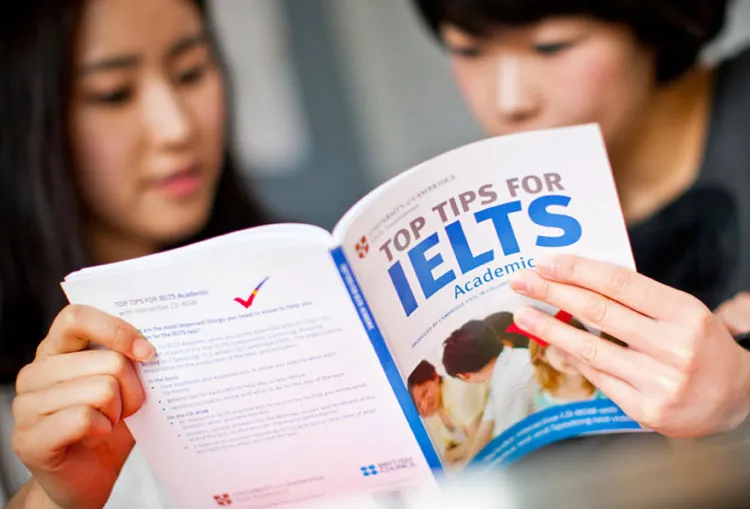Một bài viết dài 1000 từ có thể được chia theo nhiều chủ đề khác nhau dựa trên dạng câu hỏi IELTS Writing Task 2. Dưới đây là một dàn ý và bài viết mẫu về một chủ đề phổ biến trong kỳ thi IELTS Writing Task 2:
Chủ đề: “Some people think that governments should invest more in public services rather than in arts such as music and painting. To what extent do you agree or disagree with this statement?”
Dàn ý chi tiết: Luyện thi ielts
-

luyện thi ielts Introduction (Khoảng 80-100 từ)
- Giới thiệu về chủ đề
- Trình bày quan điểm cá nhân (đồng ý, không đồng ý, hoặc quan điểm trung lập)
- Body Paragraph 1 (250-300 từ)
- Lý do tại sao chính phủ nên đầu tư nhiều hơn vào các dịch vụ công cộng
- Sự cần thiết của giáo dục, y tế, và hạ tầng cơ sở
- Ảnh hưởng trực tiếp đến chất lượng cuộc sống của người dân
- Lý do tại sao chính phủ nên đầu tư nhiều hơn vào các dịch vụ công cộng
- Body Paragraph 2 (250-300 từ)
- Lý do tại sao việc đầu tư vào nghệ thuật cũng quan trọng
- Giá trị văn hóa và tinh thần mà nghệ thuật mang lại
- Nghệ thuật đóng góp vào danh tính quốc gia và lịch sử
- Lý do tại sao việc đầu tư vào nghệ thuật cũng quan trọng
- Body Paragraph 3 (250-300 từ)
- Giải pháp cân bằng: Cả hai lĩnh vực đều quan trọng
- Chính phủ có thể ưu tiên cả hai một cách hợp lý
- Sử dụng ngân sách hợp lý giữa dịch vụ công và nghệ thuật
- Giải pháp cân bằng: Cả hai lĩnh vực đều quan trọng
- Conclusion (Khoảng 80-100 từ)
- Tóm tắt quan điểm và nhấn mạnh quan điểm cuối cùng
Bài viết mẫu (1000 từ) Luyện thi ielts

Introduction: Luyện thi ielts
In modern society, the question of how governments should allocate their resources has become increasingly important. Some people argue that public services, such as education, healthcare, and infrastructure, should receive the bulk of government funding, while arts like music, painting, and other cultural activities are less essential. Others believe that the arts play an integral role in the development of a nation and should not be overlooked. While public services are undeniably crucial for societal well-being, I believe that a balanced approach, where both public services and the arts are supported, is necessary for the holistic growth of a country.
Body Paragraph 1:
Public services form the backbone of any society, directly affecting the quality of life for citizens. Healthcare, for instance, is a fundamental human right. Without access to proper medical care, people cannot lead healthy lives, and the entire workforce may suffer, hindering a country’s economic development. Similarly, education is essential for cultivating skilled individuals who will contribute to the progress of the nation. Countries that prioritize public education tend to have higher literacy rates and a more qualified labor force, which in turn boosts innovation and productivity.
Furthermore, infrastructure, such as roads, bridges, and public transportation, enables the efficient movement of people and goods. This is vital for economic growth, particularly in industries like manufacturing, retail, and logistics. Without adequate public services, a country may struggle to provide even the most basic needs for its citizens, resulting in social unrest and dissatisfaction. Therefore, it is understandable why some argue that public services should take precedence over the arts in terms of government spending.
Body Paragraph 2:
On the other hand, arts such as music, painting, literature, and performance hold significant value that extends beyond mere entertainment. The arts represent a culture’s history, heritage, and identity, reflecting the diversity and uniqueness of a nation. Cultural activities can inspire, educate, and foster a sense of belonging among citizens. For instance, national art galleries and orchestras often serve as symbols of a country’s rich heritage, drawing both locals and tourists to appreciate their cultural significance.
Moreover, the arts play a critical role in education. Studies have shown that engaging in artistic activities can enhance cognitive abilities, improve emotional intelligence, and foster creativity. These skills are essential in the modern world, where innovation and problem-solving abilities are highly valued. The arts also provide emotional relief and contribute to mental well-being, which is just as important as physical health. During challenging times, such as economic crises or even global pandemics, art and culture can offer solace and a way for people to process their emotions.
Body Paragraph 3:
A balanced approach is essential in ensuring that both public services and the arts are adequately supported. Governments do not necessarily have to choose one over the other; instead, they can allocate funds in a way that ensures public services are fully functional while still preserving and promoting the arts. For example, countries like Germany and France have shown that it is possible to maintain a high standard of public services while also heavily investing in the arts.
One solution could be to direct a higher percentage of the national budget toward public services but still allocate sufficient funds for the arts. The public sector could also encourage private investment in the arts through tax incentives or grants, reducing the burden on the government while still supporting cultural activities. Additionally, community-based arts programs, which are often less costly to maintain, can be promoted as a means of nurturing local culture and creativity.
In many cases, arts funding need not be extravagant but focused on sustainable projects that benefit both the cultural sector and the general public. For instance, public art installations in parks or murals in urban areas not only enhance the beauty of a city but also provide free access to culture for all citizens. By creating an environment where both public services and the arts can thrive, governments can ensure that their citizens enjoy both a high quality of life and a rich cultural experience.
Conclusion:
In conclusion, while public services such as healthcare, education, and infrastructure are essential for a country’s development and the well-being of its citizens, the arts also play a significant role in fostering cultural identity, creativity, and emotional well-being. Rather than choosing one over the other, governments should strive to find a balance in their spending, ensuring that both areas receive the necessary support. A nation that invests in both public services and the arts will not only thrive economically but also culturally, fostering a well-rounded society for future generations.

Lưu ý khi viết bài:
- Sử dụng từ vựng phong phú: Bài viết nên sử dụng các từ vựng học thuật phù hợp với ngữ cảnh của bài thi IELTS.
- Cấu trúc câu đa dạng Luyện thi ielts: Kết hợp các cấu trúc câu phức để thể hiện khả năng sử dụng ngôn ngữ linh hoạt.
- Liên kết ý chặt chẽ Luyện thi ielts: Sử dụng các từ nối như “furthermore,” “on the other hand,” “in conclusion” để chuyển ý một cách mượt mà.
Với cấu trúc Luyện thi ielts và cách viết này, bạn có thể phát triển bài viết của mình theo yêu cầu của bài thi IELTS Task 2 một cách hiệu quả cùng học bảng chữ cái tiếng anh.
